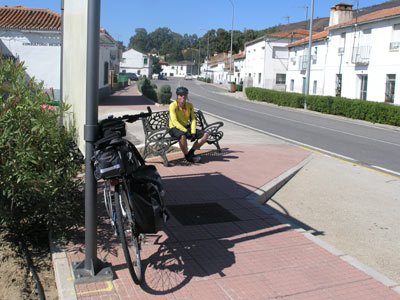 |
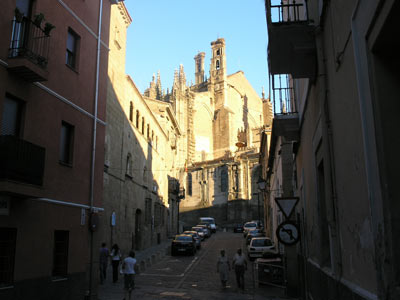 |
Lunch break at Canaveral |
Old town at Plasencia |
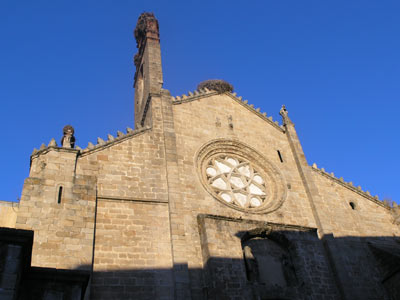 |
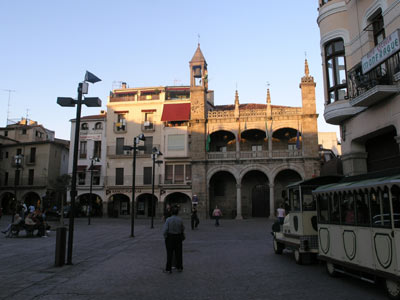 |
Church at Plasencia |
Plaza Major at Plasencia |
 |
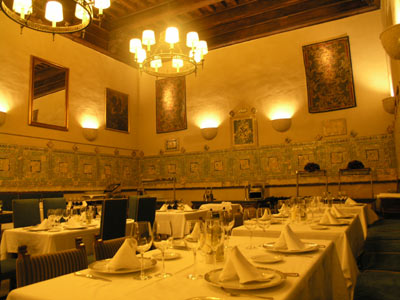 |
Town clock at Plasencia |
Parador at Plasencia |
Another day following the old N630, where it has been superceded by the motorway. Making for an easy day with 80km on the road and around 600 metres of ascent.
Casar de Caceres is the home of a cheese under the same name. It is a particularly runny cheese, that is eaten warm and with a spoon. I enjoyed it for pudding the previous night at Caceres.
Again there is very little habitation here. Apart from three or four towns one sees scarcely a house along the way
 |
 |
Lunch break at Canaveral |
Old town at Plasencia |
 |
 |
Church at Plasencia |
Plaza Major at Plasencia |
 |
 |
Town clock at Plasencia |
Parador at Plasencia |
Founded as a city in 1186 by King Alfonso VIII of Castile on the banks of the River Jerte as a city-fortress, with the purpose of colonizing and guarding the then south-western border of the Kingdom, it fell briefly to the Moors of Almanzor in 1196, and was then reconquered the following year. The city walls, which have stood since 1198, had seventy towers, eight gates and a huge Alcázar (Keep) in its highest, northernmost point. Most of it remains except the Alcázar, which was demolished in 1941 to make way for particularly ugly blocks of flats. The focal point of the old city is the market square (Plaza Mayor), where a weekly tax-free market has been in operation every Tuesday since the foundation of the city. The right to hold this market among other special rights and privileges were granted by the King in its Fueros Fundacionales (Foundational Royal Charter).
Stayed at the Parador in the centre of Plasencia. The Parador is the former Convent of Santo Domingo, founded by the Zúñiga family in the middle of the 15th century, built in gothic style both inside and out. It is located in the historical quarter of Plasencia. The dining room above is the old refectory, and is particularly striking.

Camino de Santiago - Via de la Plata Map of my route
Day 7 Day 7 of my route